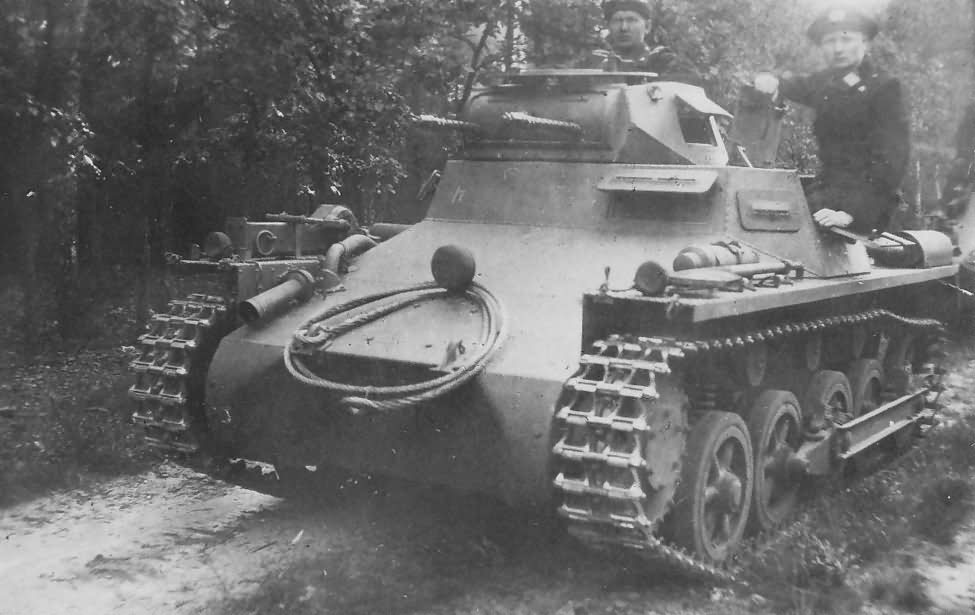Development History of the Panzer I
Early Development and Prototypes
- February 1934: The Krupp factory completed the first prototype vehicle, known as the LKA1 tank. This vehicle underwent four months of trials, after which the German Weapons Department deemed the design satisfactory.
- Initial Order: Following the successful trials, the Weapons Department placed an order with Krupp for 150 vehicles. To disguise the true nature of these tanks, the German Army designated them as Agricultural Tractor Model LA (LaS IA). This was a camouflage name intended to conceal the tank production from the international community, as Germany was prohibited from producing tanks by the Treaty of Versailles.
- Ordnance Inventory Number: The vehicle was also assigned the specific ordnance inventory number Sonderkraftfahrzeug (Sdkfz) 101, which uniquely identified it within the German military inventory.
- Production Increase: Subsequent orders expanded the total production run to 300 vehicles.
Specifications and Capabilities of LaS IA (Sdkfz 101)
- Weight: The LaS IA tank was a 5.4-tonne (5.3-ton) vehicle.
- Crew: The tank was operated by a two-man crew.
- Armor: The vehicle was lightly armored, with 6-13mm (0.2-0.5in) thick armor, sufficient only to protect against small-arms fire.
- Suspension: The suspension system was based on four pairs of road wheels.
- Engine: Powered by a 57bhp Krupp M305 B4-cylinder petrol engine, the tank could reach a maximum road speed of 37kph (23mph).
- Radio Communication: Notably, each Panzer I tank was equipped with a short-range radio, a feature that contributed significantly to the success of the early German Blitzkrieg tactics during 1939-41.
Introduction of LaS IB (Sdkfz 101)
- 1935: Production shifted to a slightly modified variant known as the LaS IB (Sdkfz 101), which was based on the second Krupp-produced prototype, the LKA2.
- Key Modifications:
- Elongated Suspension: The LaS IB featured a suspension system with an extra fifth road wheel.
- Increased Power: The LaS IB was powered by a 100bhp Maybach NL 38 TR engine, which improved the top road speed to 40kph (25mph).
- Increased Weight: The modifications brought the vehicle’s weight up to six tonnes (5.9 tons).
- Service Entry: The LaS IB tank entered service in 1935, equipping the three newly formed panzer divisions later that year.
Production and Service
- Production Rates: Initially intended as a stop-gap training tank, the LaS I saw extended production due to delays in the development of the Panzer III and IV combat tanks.
- Production Period: German factories produced the LaS IB from 1935 to 1939, manufacturing a total of 1,500 vehicles at an average rate of 25 units per month.
- Spanish Civil War: Between 1936 and 1939, both the LaS IA and IB models saw active service with the German Condor Legion, supporting General Franco’s Nationalist forces during the Spanish Civil War.
- Redesignation: In February 1938, as Germany no longer needed to conceal its tank production, the German High Command officially redesignated the LaS IA and IB tanks as Panzer I Models A and B, respectively.
The Panzer I, despite its initial role as a training vehicle, played a significant part in the early stages of German tank development and in the formation of the panzer divisions that would spearhead the Blitzkrieg tactics during World War II.
